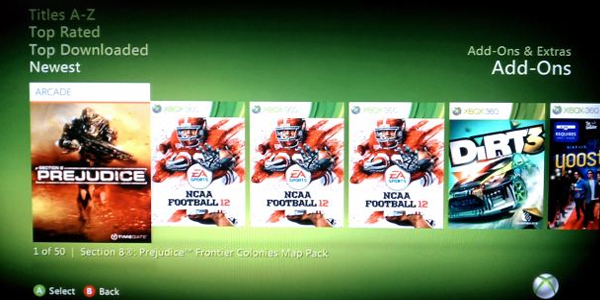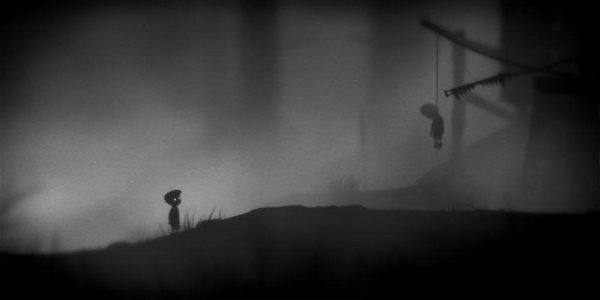Editorial: Why I don’t play retail
First off, I would like to say that I do play an occasional retail game. It’s very rare, but I do buy retail discs. Usually it is a budget title though. In 2010, I bought three retail games and only one game (UFC Undisputed 2010) was $60. The other two titles I picked up were Deathsmiles and 2010 FIFA World Cup South Africa both at $20. My other gaming purchases totaled anywhere from 30-40 Xbox Live Indie Games titles, 40-50 Xbox Live Arcade titles and 30-40 Steam titles. The downloadable platform is clearly my venue of choice for many reasons.
I chose to play the smaller games for many reasons. The love for XBLA and similar platforms eventually grew from my frustrations with their retail counterparts — similar to the way that my love for Michigan football grew from my hatred for Ohio State football. In early 2006, I purchased my Xbox 360 and my first game purchase was Gears of War because I had reached a point where Halo 2 was starting to get boring. My first disappointment with this console came in the first 20 minutes with the game. The camera settings and the motion blurs made me extremely nauseous and I had to quit with no intentions of returning. $60 down the drain.
My next purchase was Transformers: The Game and although I liked it I felt like it was about 20 hours too long when I decided to get all the achievements in the game. Then I purchased Contra on XBLA initially to play co-op with a friend and I fell in love. A game that I loved as a child was back in my life and easier because I had became a much better gamer over the years. About 5-6 hours later, I had beaten the game. A few more hours of gameplay and 200/200 was my gamerscore. I found the exact experience that I wanted out of my purchase and it was 1/12 the cost of my previous two purchases. For only $5 I was able to play an enjoyable game with a very small time commitment and the risk was not high at all. If the game sucked, it was much easier to justify a $5 loss as opposed to $60.
From there I was hooked and literally buying every XBLA title available because I had found a group of gamers that competed in overall XBLA gamerscore. Every week a $5 game would release and the majority of them were fun and short time commitments. XBLA was a perfect fit for any ADD gamer who gets bored with most games after a few hours. As time moved on, more XBLA games became great experiences and more retail games frustrated me with their new-found business tactics.
The first time I realized that retail games had changed for the worse was when I noticed the growing amount of DLC releasing for every title. I absolutely can’t stand DLC! Where do I even begin with this gripe? How frustrating is it for customers to get home with a new game in hand and realize that there is an additional content pack available for $5-$10? If you thought $60 bought the full version of the game, you were wrong.
So gamers wised up and started buying used games for a few dollars cheaper a few days after the initial release. And that lead to the birth of the “Online Pass”. Bring home a $55 used title and you’re likely forced to pay an additional $10 to play your game online. If you thought you paid $60 per year for the ability to play games online with your Xbox Live Gold subscription, you were wrong again. Xbox Live tends to act more like a middle man in this relationship as publishers still control way too many critical details of every game.
To further encourage customers to buy games new on release day, we see the birth of pre-order DLC. At first, I had no problem with this business tactic. True fans should be rewarded for their loyalty with an extra bit of content. But pre-order DLC has grown to a point where many different retailers all have their own exclusive pre-order DLC. Now a true fan has to buy multiple copies of a game in order to own all content that is available in their favorite game. How is this rewarding the customer that is doing exactly what you want them to do? They guarantee developers a sale of a new copy months before the release date and to pay them back, developers leave them feeling like they own incomplete versions of their game.
If you’re still able to get past all these up-front hurdles, let’s look at what happens after the game has been out for a while and gamers are settled in to their ways. Some games are updated every 1-2 years with slight modifications making gamers constantly feel like they’re playing dated games. This is more common with sports and fighting games, but the industry as a whole has become very sequel-heavy. But if playing an older version of a game doesn’t bother you, don’t worry, developers know how to force you to buy the new versions of their titles. In comes the birth of server shut downs, which are becoming more frequent and it takes any value out of games that are a few years old.
Along with the idea that most retail games are sequels, let’s talk about the lack of innovation. Retail games have all turned into multi-million dollar investments making it impossible for publishers to take a risk. Nobody is going to back a game that is a bad investment and that makes sense. Now the true value of XBLA begins to shine because the innovation found in downloadable titles far exceed 90% of the retail games available today. Madden added a new vision cone, Mass Effect added Kinect support, Halo added forge. All small additions while XBLA was busy adding unique experiences like no other with titles like Braid, Limbo and Stacking.
One final reason I play primarily XBLA games is the fact that retail games have turned into incredible commitments of time. As stated above, I’m an ADD gamer. After about 5-6 hours with a game, I’m mentally checked out of it with a few exceptions. Most retail games contain 20+ hours of gameplay these days to ensure value for the customer’s dollar. The problem with this is that a lot of those 20+ hours of content is redundant and boring. XBLA games tend to be so short that you rarely feel like you are doing the same thing twice, whereas retail games often require grinding to simply move on through a campaign.
Another addition to retail time commitments is DLC after the release. A lot more retail games add DLC when compared to XBLA titles. The feeling of discovering DLC for a game I completed months ago triggers an immediate sigh of frustration. For me, this is more of a pain in the ass than it is a welcomed reason to return to a game. When I finish a game, I want that to be the end of the story. Sometimes I truly miss the days where a lack of internet connections didn’t allow developers to continue to alter and add to their game after the release.
You add all this up and you’ll find my games library consisting of 250+ XBLA titles, 100+ XBLIG titles and only 21 retail titles. The amount of retail games that stand out to me as must play games of the past six years can be counted on one hand. But I can go on for days about XBLA games that were one of a kind experience. The funny thing is that my massive XBLA catalog came at a lesser price, lower risk and a much smaller level of frustration with their business tactics. It was clearly the right choice for any gamer who has seen the price and commitments for retail games increase while the fun and innovation have clearly leveled off. Hopefully as XBLA becomes a more prominent platform, it won’t follow in the footsteps of its big brother. Only time will tell. For now retail games are far too frustrating for me and I feel like more people tend to share that attitude every day. So if you’re looking for something fresh and inexpensive to experiment with, why not check out what XBLA games you may have overlooked.




